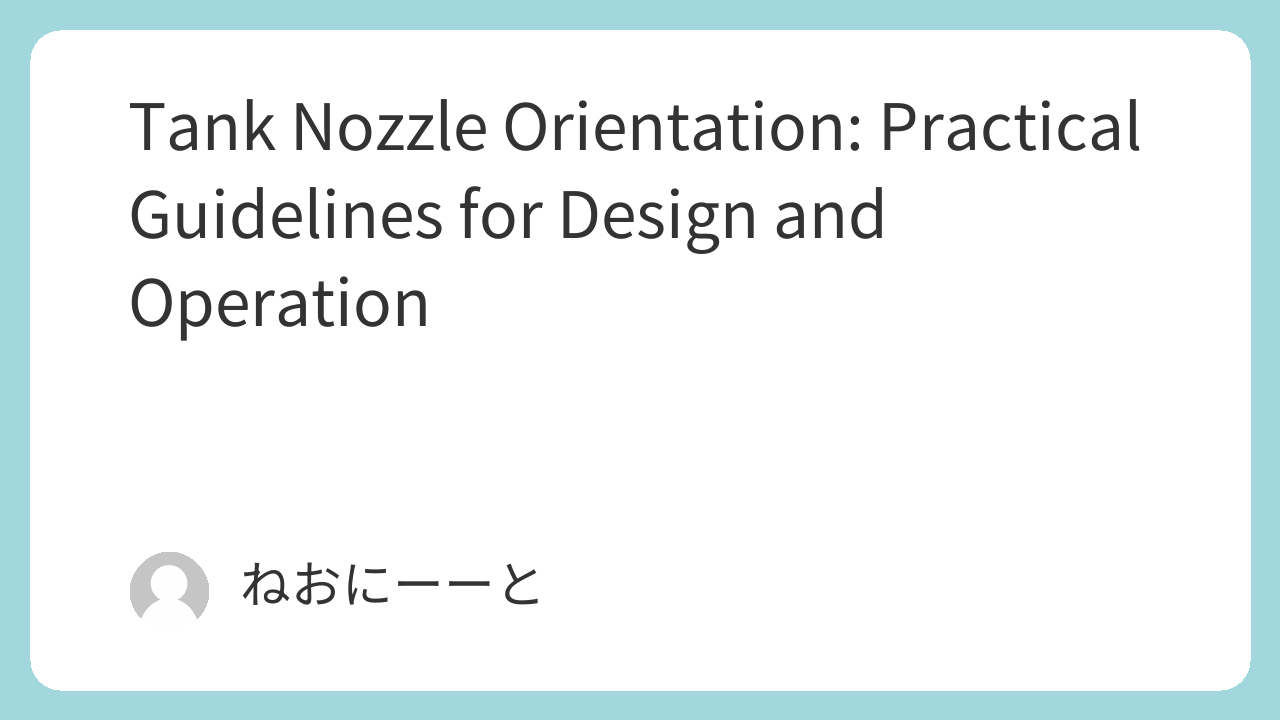When designing chemical or industrial tanks, nozzle orientation often seems like a small detail. In reality, poor nozzle placement can lead to pipe stress, maintenance problems, or even safety risks. This article explains the key considerations for tank nozzle orientation in a simple and practical way, so engineers can avoid common mistakes during design and ensure smoother operations later.
Essential Tank Terminology for Chemical Engineers|Master the Words Used in Real Plant Design
9 Common Tank Nozzle Design Patterns for Chemical Plants
Pressure Testing in Tanks and Piping: Understanding Leak, Hydrostatic, and Water-Filling Tests
Designing Tank Manholes: Key Points for Safety and Maintenance Efficiency
Understanding Design Pressure in Chemical Plant Tanks: A Practical Guide
1. Why Nozzle Orientation Matters
Tank nozzles connect the vessel to piping, pumps, and instrumentation. If they are poorly positioned, you may face:
- Excessive pipe stress due to misalignment
- Difficult maintenance access for valves and instruments
- Safety risks if emergency connections are blocked
- Construction delays if piping and tank layouts do not match
A good orientation minimizes stress, supports easy operation, and ensures safety.
2. Common Guidelines for Orientation
- Process piping alignment
Nozzles should be placed to minimize pipe bending and avoid sharp turns. - Accessibility
Operators need to reach valves, gauges, and manways without obstruction. - Maintenance clearance
Leave enough space for equipment removal (e.g., agitators, mixers). - Safety and emergency use
Firefighting connections, vents, and overflow lines must remain unobstructed. - Standardization
Use consistent orientations across similar tanks for easier operation and training.
3. Examples of Poor Orientation
- Outlet nozzle placed too close to a wall, making pipe installation impossible
- Instrument nozzle behind ladders or platforms, blocking visibility
- Vent nozzle positioned under a roof beam, preventing proper exhaust
These small mistakes can become expensive to fix after fabrication.
4. Best Practices for Engineers
- Review nozzle orientation with 3D piping models during design
- Involve maintenance and operations teams early for feedback
- Use company standards or checklists to avoid case-by-case mistakes
- Always confirm safety access and clearance in the final design review
Conclusion / Summary
Tank nozzle orientation may look like a minor design detail, but it directly affects safety, operability, and project cost. By following simple guidelines—such as ensuring accessibility, reducing pipe stress, and standardizing layouts—engineers can avoid common pitfalls and deliver tanks that are both reliable and easy to maintain.

Comments